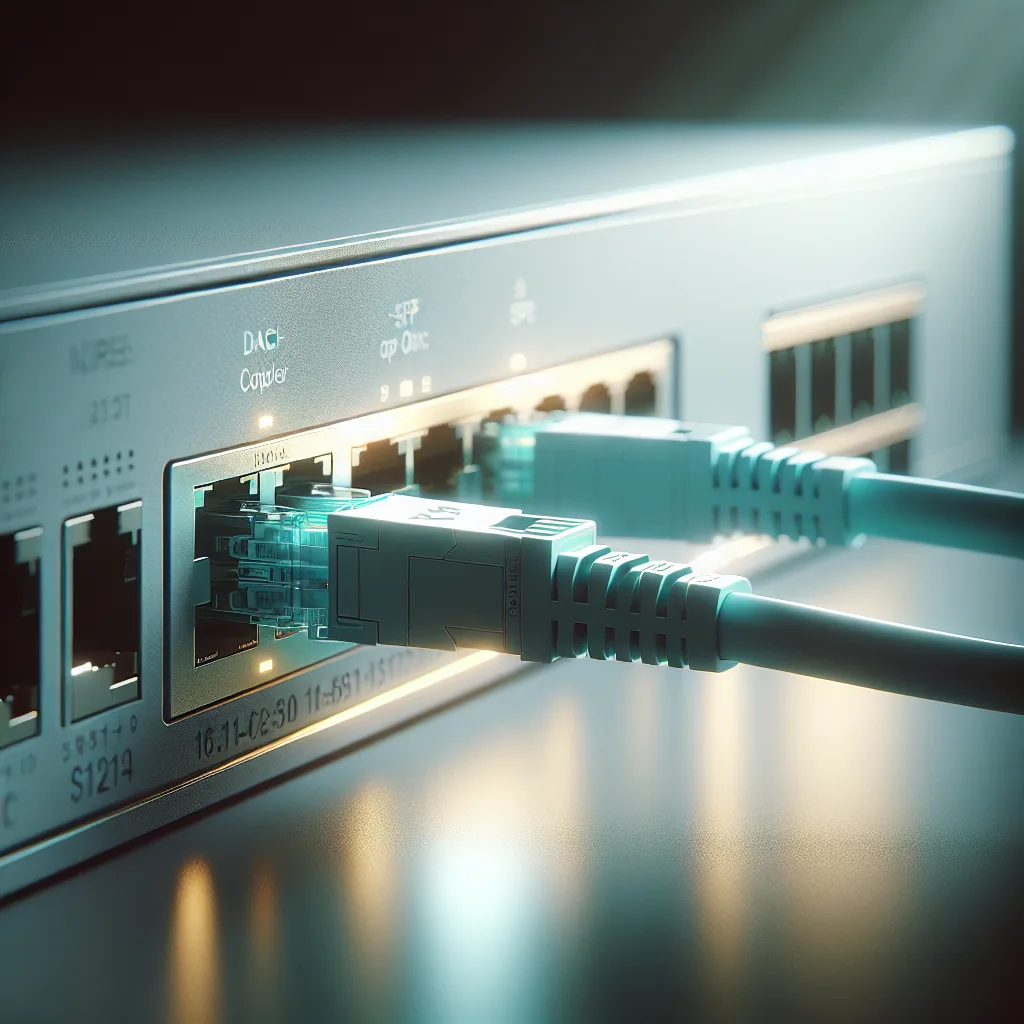Upgrading to a 10Gbps or 25Gbps network? Learn the real-world pros and cons of DAC vs. fiber optic cables to make the right choice for your home lab.
So, you’re leveling up your home lab. You’ve got the servers, you’ve picked out the new 10Gbps or even 25Gbps network cards, and you’re ready for some serious speed. But then you hit a surprisingly tricky question: how do you actually connect everything together?
You start looking at your switch’s SFP+ ports and realize you have two main choices: Direct Attach Copper (DAC) cables or SFP+ transceivers with fiber optic cables.
If you’re feeling a little stuck, you’re not alone. I’ve been there. It seems like a technical decision, but it’s actually pretty simple once you break it down. Let’s walk through the real-world pros and cons, so you can figure out what’s best for your setup.
The Plug-and-Play Option: DAC Cables
First up, let’s talk about DACs. Think of a DAC as a super-simple, all-in-one solution. It’s a thick copper cable with the SFP+ connectors permanently attached to both ends. You just buy the cable length you need and plug it in. Done.
So, when should you use them?
DACs are perfect for short-distance connections. I’m talking about connecting a server to a switch that’s in the same rack.
Here’s why they shine in that role:
- They’re cheap. A DAC is almost always the most cost-effective way to get a 10G or 25G link up and running. You buy one item—the cable—and that’s it. No need to buy two separate transceivers plus a cable to go between them.
- They’re simple. There’s no guesswork. You just plug it in, and it works. You don’t have to worry about matching transceiver types to fiber cable types.
- They run cool. This is a big one. DACs are passive, meaning they don’t draw any real power, and as a result, they don’t produce heat. In a crowded server rack where every degree matters, using DACs can genuinely help with your overall cooling.
But they have one major limitation: distance.
Most DACs top out at around 7 meters (about 23 feet), and they can get a bit finicky at the longer end of that range. They’re also thicker and less flexible than fiber, which can make cable management in a tight space a bit more challenging.
The verdict on DACs: Use them whenever you can for short, in-rack connections. They’re the simple, cool-running, and budget-friendly choice.
The Flexible Powerhouse: Fiber Optic Cables
Now for the other option: fiber. This setup involves three pieces: two SFP+ transceivers (one for your server, one for your switch) and a fiber optic cable that connects them. The transceivers are the little modules that do the work of converting electrical signals to light, and the cable is just the glass pathway.
So, when does fiber make sense?
Anytime distance is a factor. If you need to connect a computer in your office to a switch in a closet down the hall, fiber is your only real answer.
Here’s where fiber excels:
- Incredible distance. Even the most common type of “short-range” multimode fiber (like OM3 or OM4) can run for hundreds of meters without breaking a sweat. If you use single-mode fiber, you can go for kilometers.
- Amazing flexibility. The cables themselves are thin, lightweight, and easy to snake around corners or through conduits. This makes routing them much easier than wrestling with a stiff DAC cable.
- It’s modular. Need to change something later? Just swap the parts. You can use the same fiber cable and just upgrade the transceivers on each end if a new standard comes out.
But there are a few trade-offs:
- It costs more. You have to buy two transceivers and a cable, which adds up. For a single short link, it can be two or three times the price of a DAC.
- It’s slightly more complex. You have to make sure your parts match. For example, if you buy “SR” or Short Range transceivers, you need to pair them with a multimode fiber cable (like an aqua-colored OM3/OM4). It’s not hard, but it’s one more thing to think about.
- They generate some heat. This was a key point in the original question that inspired this post. While fiber transceivers run much cooler than the notoriously hot 10GBASE-T Ethernet SFPs, they still use power and create heat. A rack full of them will be warmer than a rack full of passive DACs.
My Rule of Thumb: In the Rack vs. Between Rooms
So, here’s how I decide. It’s a simple, two-part rule:
- If I’m connecting two devices in the same rack, I always use a DAC. It’s cheaper, simpler, and runs cooler. No-brainer.
- If I need to connect to another rack or another room, I use fiber. It’s the only practical way to cover the distance, and the flexibility is a huge bonus.
That’s really all there is to it. Don’t overthink it. One isn’t “better” than the other; they’re just tools for different jobs. Look at your rack, measure the distance you need to cover, and you’ll have your answer. Happy networking!
